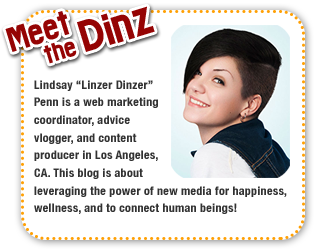Nearing the end of my program at Full Sail University, after
having spent a year studying how to make a living from Entertainment Web
content, my views and expectations of this industry has changed a great deal.
Current news stories exemplify the overall reality. Phillip
DeFranco, one of the most iconic figures of online entertainment, has
sold all of his assets to Revision3 and become an executive in the company.
Season 2 of web series Continuum is going to be available
through subscription on JTS.TV before it is ever available for free on
YouTube. Even the biggest online acts need the support of bigger companies to
monetize their endeavors. It’s not as simple as “go viral, get advertising, and
you’re set.”
Developing my business plan for Linzer Dinzer was a sobering
experience. Even if my videos went viral, even if we sold 60 T-shirts a month,
even if I moved my show to a subscription-based model, and even if I sold
private advice sessions, I would still not generate enough revenue to hire my
team. To put it bluntly, I learned that business is hard.
On a personal note, I think my fascination with YouTube
celebrity may have come from a sense of fear. Fear of competition, fear of
those who are more advanced than myself in the industry, fear of being seen as
a “child” or a “newbie” to traditional media companies. YouTube gave me hope that
I could bypass all of that, to avoid the scrutiny of harsh criticism for a slim
chance to be being chosen. I could just sit back, make videos, and watch the
numbers rise.
But like my mom used to tell me, “the long way is the
shortcut.” I have to put myself out there – and not just out there in terms of
uploading videos. I have to network within the industry. I have to form
partnerships. I have to compete. I have to work so hard at perfecting the
content that I create that I can rub elbows with the big boys.
I entered this program with one question on my mind – is YouTube
the end goal, or is YouTube a training ground? Now I know. YouTube is a
training ground.
My journey at Full Sail is coming to a close, but the real
adventure is just beginning.
